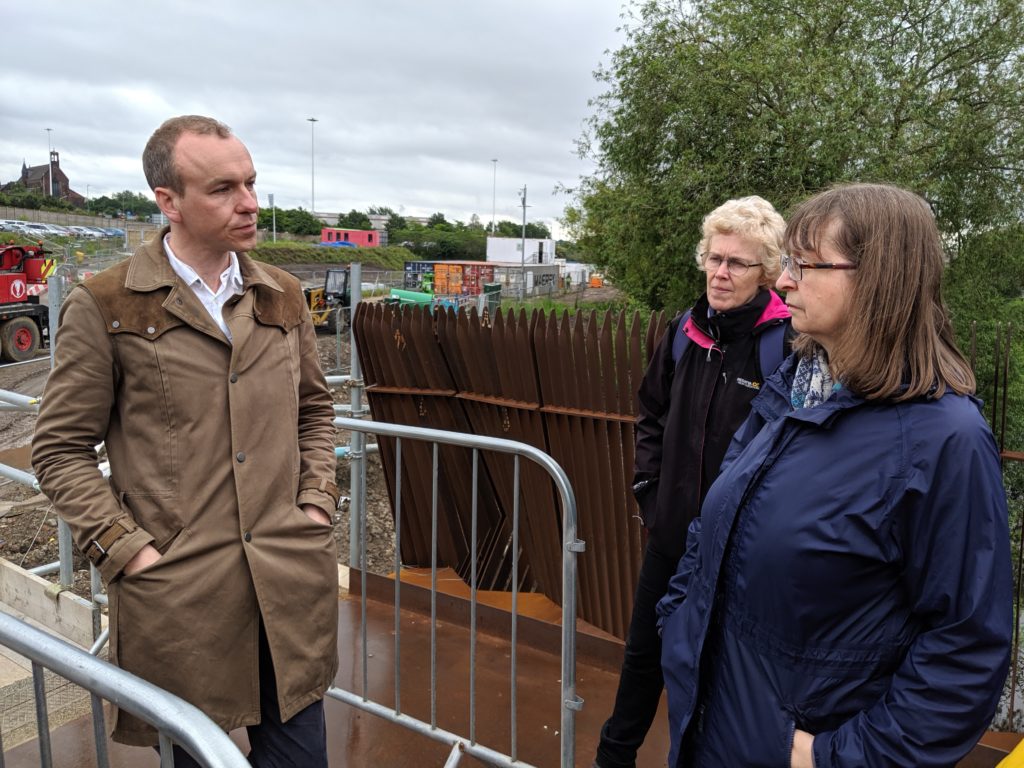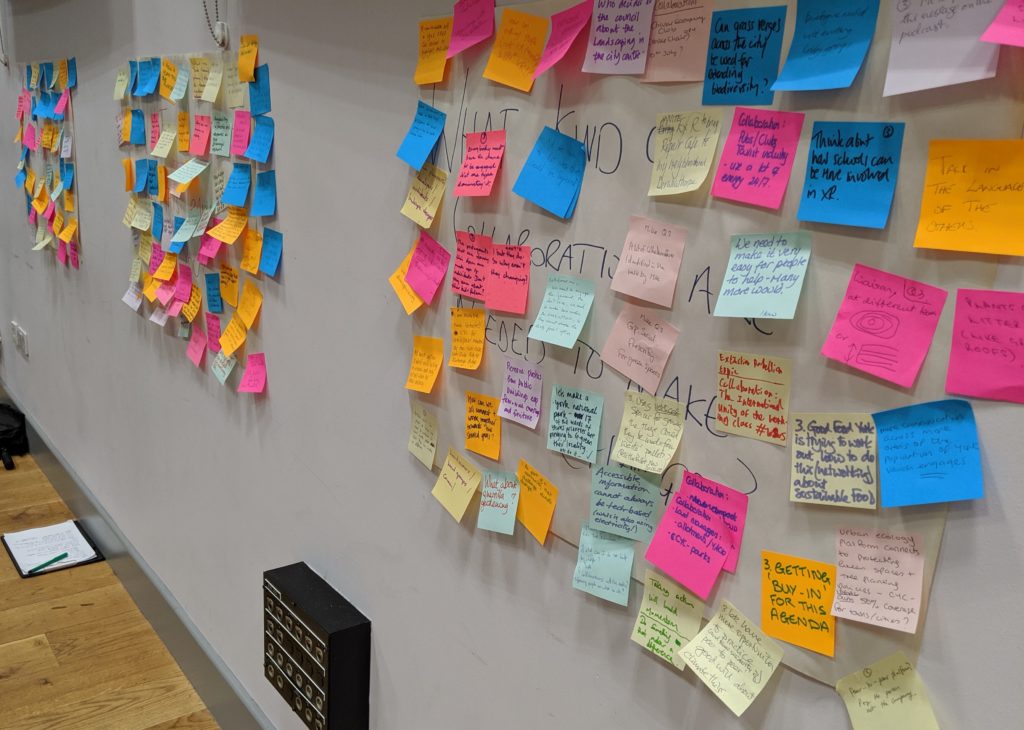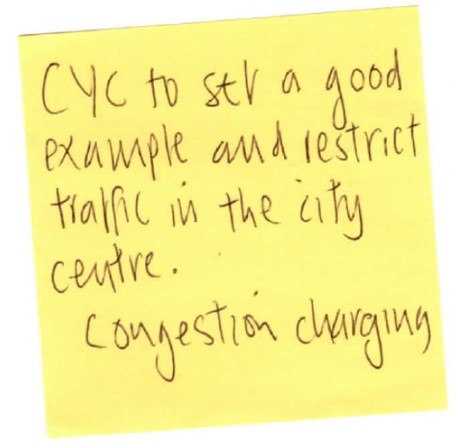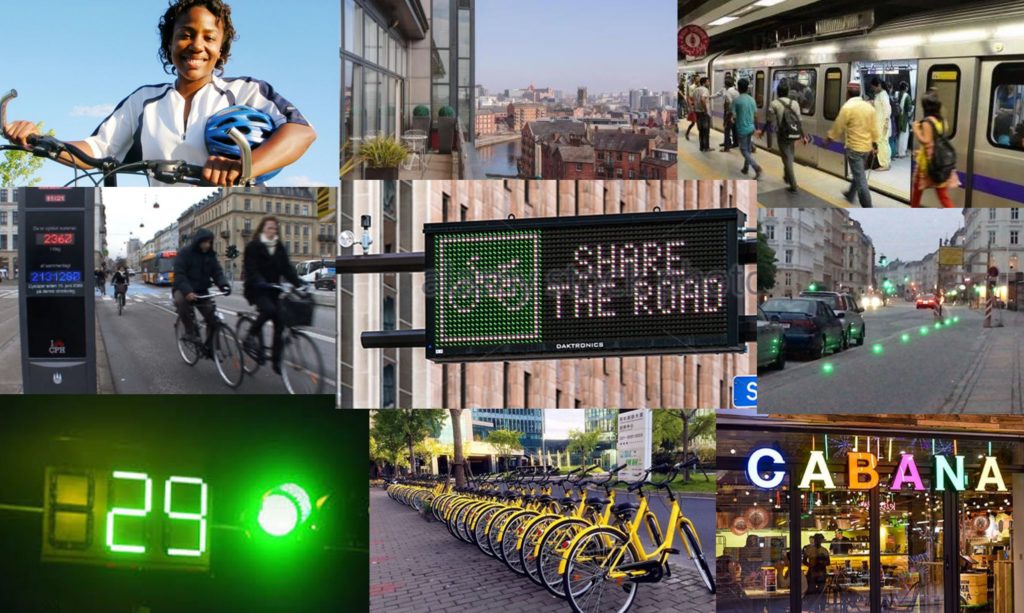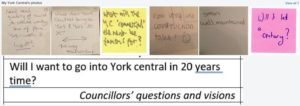Innovative developer Citu have been collaborators on the My York Central project for some time – they took part in our Sustainable Construction – Let’s Do It! event last June, and have expressed an interest in building on York Central. Their approach is nicely set out in their website but in particular there are many aims which are aligned with the Big Ideas which came out of the public engagement process – building sustainably, and building to high standards of performance and comfort for all; providing training and employment to local people and taking a holistic approach to what they do – not simply building homes but building a piece of city.
We decided it was worth taking a look at one of their projects in the flesh, so Helen and I took a trip over to the Leeds Climate Innovation District accompanied by Imelda Havers (Bluefish Regeneration), Caroline Lewis (Clean Air York), Denise Craghill (Executive Member for Housing), Tim Moon (Community and Self-Build Housing Officer) and James Newton (Yorspace). We were met by Citu Director Chris Thompson, and given a guided tour of Citu’s factory and their development site on the riverside – where they will be building around 800 homes over about seven years – accompanied by a primary school and care home. They’ve also thrown in a bridge…
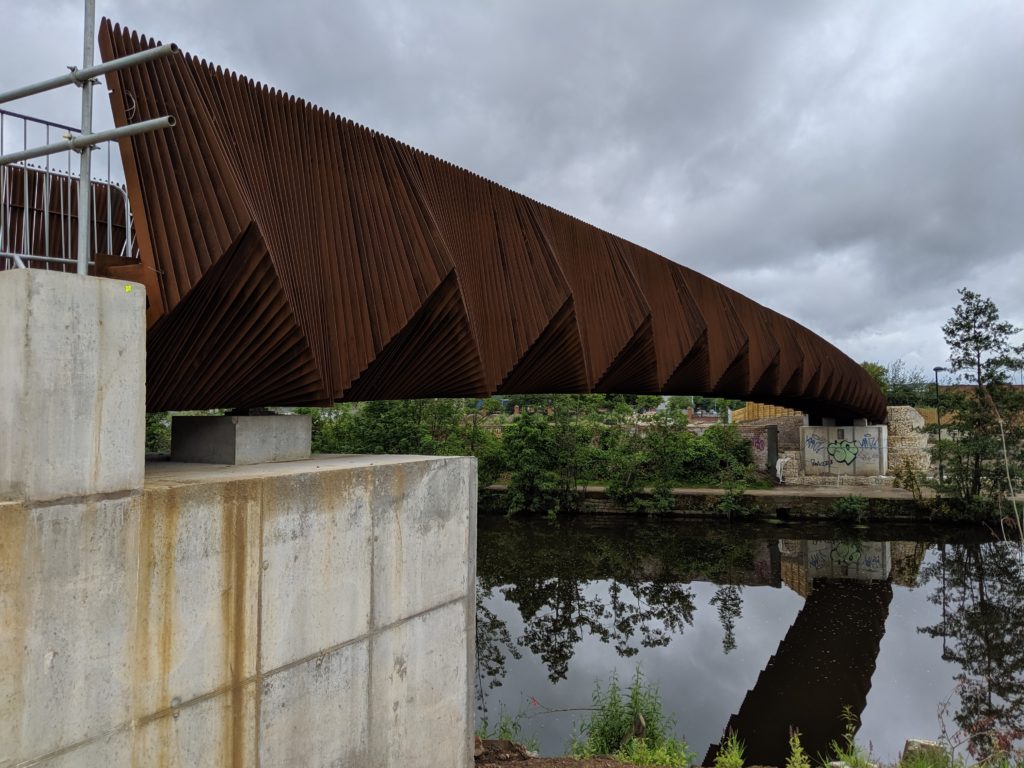
…not because it was a planning requirement, but because they thought it was a good thing to do – to provide better walking links within their new community, and to local communities beyond.
This hints at their approach – they’re not a standard housebuilder. They have based their whole enterprise on a wish to create a move towards low-carbon cities, and have brought to this approaches from the motor manufacturing industries and elsewhere. This includes manufacturing timber frames for their homes in a factory on the site – a very lean operation where feedback enables them to test and refine practices in an ongoing process of change. Not without challenges though – the production lines in the factory work on a timescale of seconds, while the more-traditional site works in increments of weeks. When the two come together it isn’t always pretty, but is a constant spur for change.
The company employs about 20 apprentices on site – most come from a traditional construction background but are destined for a more multi-skilled workplace, something which is still at odds with CITB training practices. Management staff are largely from outside the construction industry, and very much focussed on process – the “how” to the final built product’s “what”. Timber frame manufacture is gearing up for a 300% increase in the next six months.
The site spans the River Aire, with Phase One currently underway on the north bank, arranged in long terraces which respond to the waterfront location. Every square inch of the site serves more than one function – homes are stacked on a deck above well-concealed parking, and riverside fire engine access road is constructed from grass in a plastic mesh so it can also be used by local children for play and as an informal access to riverside sitting areas. Even the bridge serves multiple purposes – accommodating the local heat network’s bulky piping across the Aire. As a result, higher densities allow them to profitably tackle a “difficult” site which would be ignored by most developers.
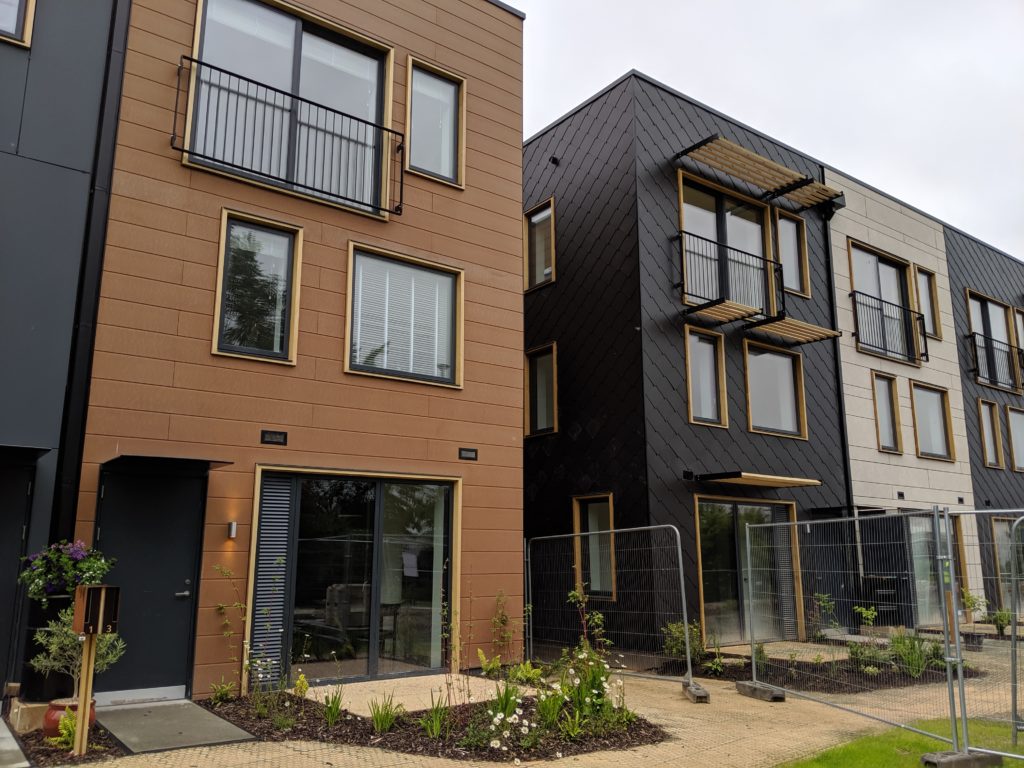
The timber-framed homes are very contemporary in feel – claddings are applied direct to the frame (no brick skin disguises here) and are built to high environmental standards. Design and construction is done to Passivhaus standard (the PHPP design tool is used throughout and every house has, and passes, two airtightness tests) but the houses are not certified. This is because prioritising orientation in relation to the river rather than the sun means overall energy performance varies. Some will be better than the Passivhaus limit of 15kWh/m2yr wheras others will fail to meet it – although overall on average the target will be hit. Is this fair? Well, at Passivhaus levels even a 300% variation in energy use isn’t really a biggie – £100 or £300 a year for your fuel bills isn’t a deal-breaker on a £400,000 house.
The showhouse we visited was three-storey, with living space at ground floor lit from above by a light-well at the rear of the house – a response to the back-to-back configuration but also a way to back up mechanical ventilation with stack-effect summer purge ventilation. Sunshading above windows is a spec-your-new-wheels-style optional extra, but even without it, summer overheating is expected to be infrequent. Internal finishes are contemporary but fairly conventional – Citu have no intention to “go volumetric” by factory-producing entire rooms. The timber frame panels are trucked across from the factory, assembled on site and then a fairly conventional fit-out process starts.
But it’s very much not just about the house. The “package” which is sold is in large part the location and new neighbourhood. This is literal – the land is retained in co-ownership by the collective owners, and the energy and IT networks are similarly shared, evening out demand on renewables output and allowing a surplus to be made on broadband provision which is ploughed back to the benefit of all. On a more emotional level, owners are being offered buy-in to a neighbourhood, a broader identity, rather than simply four walls. This significantly shifts the focus onto placemaking – private outdoor spaces are largely confined to roof terraces, but public realm is generous and richly specified – wildflower meadows flank riverside decking and the hidden parking (around 0.6-0.7 spaces per dwelling) means you’ll never see a car on the shared street, ensuring it becomes a social space.
We left discussing how this might translate onto York Central. Densities and building heights there may be higher, but the principle of doubling up uses on any given footprint has already been tested to some extent in Leeds. The Leeds development is only 5% “affordable” (in partnership with Leeds Community Homes) and the sale prices certainly aren’t bargain basement. But these are high-spec homes – comfortable and with very, very low running costs. And Citu reckon that the process of refining their operation will see their costs being level with “conventional” homebuilders within three years. It certainly feels like a conversation worth continuing, and an already promising fit with the big ideas of homes built to high standards and mixed-use high-density neighbourhoods, with communities made through exchange. We’ll report on that conversation as it continues – meanwhile many thanks Citu and Chris Thompson.
